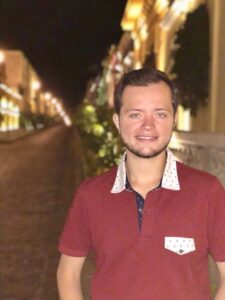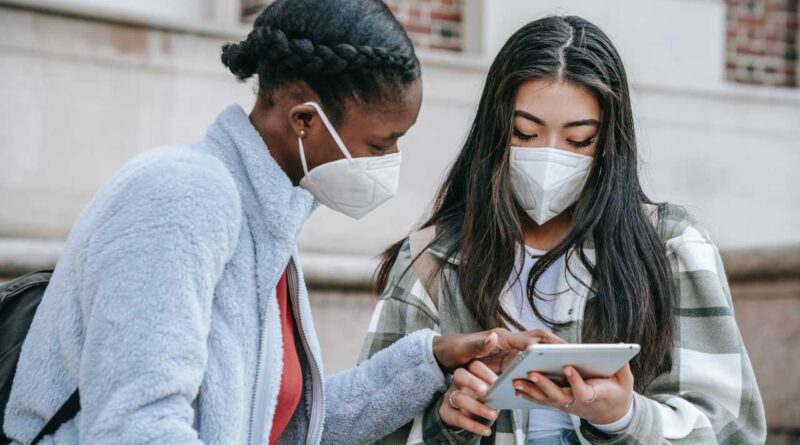The Battle Hidden within the COVID-19 Pandemic
The Battle Hidden within the COVID-19 Pandemic: The Infodemia and the Tsunami of Misinformation
HEALTH
by Rafael Cisneros
 Since the beginning of the pandemic, we have faced COVID-19 with much ingenuity, trusting in the power of technology to help us survive, socialize, and work during a time when we fear even the air we breathe. This same fear has uncovered how fragile we are to the misinformation spread through the internet, especially on social media. The term infodemia was coined to represent this very phenomenon. Unfortunately, the infodemia has resulted in protests against established preventive measures such as social distancing, mask usage and quarantining.
Since the beginning of the pandemic, we have faced COVID-19 with much ingenuity, trusting in the power of technology to help us survive, socialize, and work during a time when we fear even the air we breathe. This same fear has uncovered how fragile we are to the misinformation spread through the internet, especially on social media. The term infodemia was coined to represent this very phenomenon. Unfortunately, the infodemia has resulted in protests against established preventive measures such as social distancing, mask usage and quarantining.
First came the belief that COVID-19 was made in a laboratory by the government of China against the USA; and vice versa that it was created by the USA against China. Then, came the belief that COVID-19 was nothing more than a simple cold and that mortality rates were being manipulated by the wealthy people of the world in a plot to take away the freedom of the people.
Another accused Bill Gates, co-founder of Microsoft, of having created the virus to administer a vaccine that had a microchip to monitor and control the population; all based on a TED talk he gave in 2015 warning the world about an imminent epidemic for which the world was not prepared to tackle.
Similarly, a belief was being disseminated that the cellular 5G technology could spread the virus, which ultimately resulted in the destruction of many telecommunication towers across the world. Even more worrisome was the dissemination of dangerous recommendations including the use ozone chambers and the consumption of hydrogen peroxide and chlorine dioxide to kill the virus in your body. The reality is that most of these theories are based on anecdotal reports that fail to consider that most people with COVID-19 have a favorable prognosis.
Worst of all is that social media has helped make the infodemia possible: the chain messages of questionable remedies shared in WhatsApp groups, the Facebook posts warning that COVID-19 is a lie, the interviews of supposed physicians who question the utility of preventive measures, and the re-sharing of posts spreading flawed scientific studies; all with the ultimate goal to create a viral tsunami online that left many with more fear and uncertainty.
Fortunately, our government has successfully pressured many of the social media platforms to react. For example, WhatsApp started limiting the number of times you can forward a message automatically to groups and both Twitter and Facebook have implemented filters to eliminate publications with information going against public health recommendations. Although our government has taken action to address the misinformation tsunami, we still need to do our part by educating ourselves on how to distinguish between true and false information. We should not take for granted what we read or hear on social media. Instead, search for information from reliable sources including the Centers for Disease Control and Prevention (CDC) and the World Health Organization (WHO):
https://www.cdc.gov/coronavirus/2019-ncov/index.html
https://www.who.int/emergencies/diseases/novel-coronavirus-2019
https://coronavirus.health.ny.gov/home
References
- A COVID-19 “Infodemic”? How to Make Sense of What You’re Reading. (n.d.). Yale Medicine. Retrieved February 19, 2022, from https://www.yalemedicine.org/news/covid-19-infodemic
- Acosta-Quiroz, J., Iglesias-Osores, S., Acosta-Quiroz, J., & Iglesias-Osores, S. (2020). COVID-19: Desinformación en redes sociales. Revista Del Cuerpo Médico Hospital Nacional Almanzor Aguinaga Asenjo, 13(2), 217–218. https://doi.org/10.35434/rcmhnaaa.2020.132.678
- Ball, P., & Maxmen, A. (2020). The epic battle against coronavirus misinformation and conspiracy theories. Nature, 581(7809), 371–374. https://doi.org/10.1038/d41586-020-01452-z
- Cinelli, M., Quattrociocchi, W., Galeazzi, A., Valensise, C. M., Brugnoli, E., Schmidt, A. L., Zola, P., Zollo, F., & Scala, A. (2020). The COVID-19 social media infodemic. Scientific Reports, 10(1), 16598. https://doi.org/10.1038/s41598-020-73510-5
- COVID: 10 principales teorías de conspiración. (n.d.). Alliance for Science. Retrieved February 19, 2022, from https://allianceforscience.cornell.edu/blog/2020/05/covid-10-principales-teorias-de-conspiracion/
- Eliassen, I., & Pena, P. (2020, June 12). Real 5G issues overshadowed by Covid-19 conspiracy theories. Investigate Europe. https://www.investigate-europe.eu/en/2020/5g-covid-conspiracy/
- Entre la reticencia y la presión, así han actuado las redes sociales ante la ‘infodemia’ de COVID-19. (n.d.). Agencia SINC. Retrieved February 19, 2022, from https://www.agenciasinc.es/Reportajes/Entre-la-reticencia-y-la-presion-asi-han-actuado-las-redes-sociales-ante-la-infodemia-de-COVID-19
- Factsheet-infodemic_eng.pdf. (n.d.). Retrieved February 19, 2022, from https://iris.paho.org/bitstream/handle/10665.2/52052/Factsheet-infodemic_eng.pdf
- Gonzales, G. F., & Vásquez-Velásquez, C. (2021). Ingesta de dióxido de cloro para la COVID-19. Revista de la Sociedad Peruana de Medicina Interna, 34(3), 100–106. https://doi.org/10.36393/spmi.v34i3.609
- Las teorías conspirativas sobre el 5G y el coronavirus que llevaron a la quema de mástiles de telefonía celular en Reino Unido. (n.d.). BBC News Mundo. Retrieved February 19, 2022, from https://www.bbc.com/mundo/noticias-internacional-52182841
- Miller, J. M. (2020). Psychological, Political, and Situational Factors Combine to Boost COVID-19 Conspiracy Theory Beliefs. Canadian Journal of Political Science/Revue Canadienne de Science Politique, 53(2), 327–334. https://doi.org/10.1017/S000842392000058X
- Noticias Ocultas X. ¡Difundir! Médicos del Mundo Unidos por la Verdad. (2020, July 20). YouTube. https://www.youtube.com/watch?v=xI4bmxQfIzc 04/09/2020
- Richtel, M. (2020, February 6). W.H.O. Fights a Pandemic Besides Coronavirus: An ‘Infodemic.’ The New York Times. https://www.nytimes.com/2020/02/06/health/coronavirus-misinformation-social-media.html
- Scales, D., Gorman, J., & Jamieson, K. H. (2021). The Covid-19 Infodemic—Applying the Epidemiologic Model to Counter Misinformation. New England Journal of Medicine, 385(8), 678–681. https://doi.org/10.1056/NEJMp2103798
- TED. (2015, April 3). Bill Gates: The next outbreak? We’re not ready | TED. https://www.youtube.com/watch?v=6Af6b_wyiwI
- Vega-Dienstmaier, J. M., & Vega-Dienstmaier, J. M. (2020). Teorías de conspiración y desinformación entorno a la epidemia de la COVID-19. Revista de Neuro-Psiquiatría, 83(3), 135–137. https://doi.org/10.20453/rnp.v83i3.3792
Article photos by Charlotte May and Edward Jenner from Pexels
 Rafael Cisneros was born to Mexican parents who raised him in Mexico for most of his early life. He then moved to New York with his family where he completed his K-12 education with the goal of being the first to pursue higher education in the U.S. He graduated from Cornell University with a bachelor’s in human biology in 2016. He then took two gap years to work in a community health clinic serving primarily underserved Latinx patients in the NYC suburbs. In 2018, he began his medical training at the University of Rochester School of Medicine & Dentistry where he currently is a research fellow and member of both the school’s Latino Medical Student Association’s (LMSA) chapter and the “Latinx Health Pathway.”
Rafael Cisneros was born to Mexican parents who raised him in Mexico for most of his early life. He then moved to New York with his family where he completed his K-12 education with the goal of being the first to pursue higher education in the U.S. He graduated from Cornell University with a bachelor’s in human biology in 2016. He then took two gap years to work in a community health clinic serving primarily underserved Latinx patients in the NYC suburbs. In 2018, he began his medical training at the University of Rochester School of Medicine & Dentistry where he currently is a research fellow and member of both the school’s Latino Medical Student Association’s (LMSA) chapter and the “Latinx Health Pathway.”

